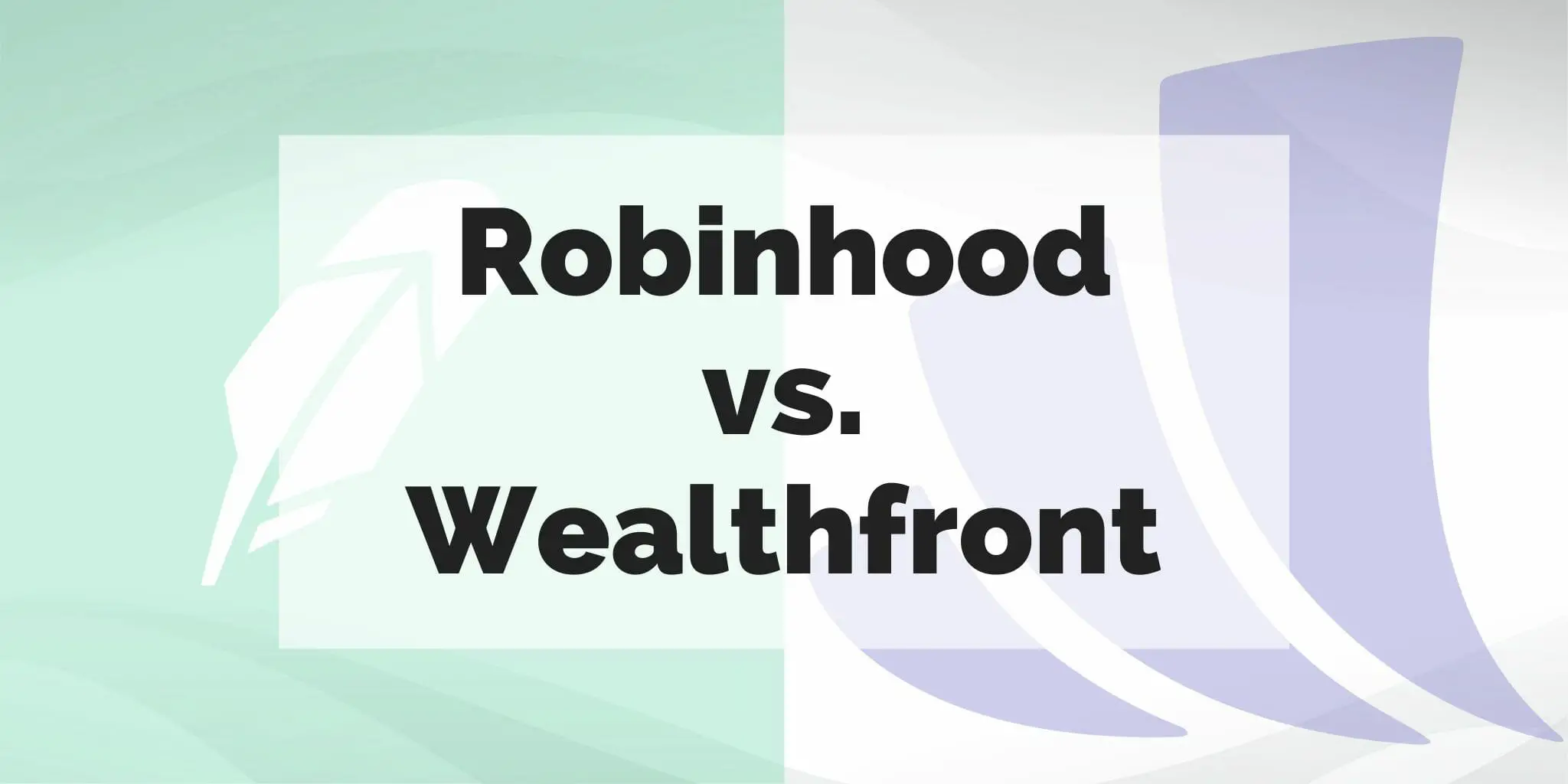A look at “Robinhood And Wealthfront Comparing” Investing can be an intimidating endeavor, especially for novice investors who are just starting to dip their toes into the financial world. Luckily, there are investment apps available that make the process more accessible and user-friendly. Two popular options in this space are Robinhood and Wealthfront. In this article, we will compare these two investment apps to help you determine which one may be ideal for you as a novice investor.
Table of Contents
User Experience
When it comes to user experience, both Robinhood and Wealthfront strive to provide a seamless and intuitive interface. Robinhood is known for its simplicity, offering a user-friendly design that appeals to beginners. The account setup process is quick and straightforward, allowing users to start investing within minutes. On the other hand, Wealthfront also offers a user-friendly experience, but it caters more towards long-term investors with its focus on automated investing.
Investment Options
One of the key factors to consider when choosing an investment app is the range of investment options available. Robinhood and Wealthfront offer different investment avenues. Robinhood primarily focuses on stocks and exchange-traded funds (ETFs), allowing users to buy and sell shares of companies with ease. Additionally, Robinhood gained popularity for its early support of cryptocurrency trading, making it an attractive choice for those interested in digital assets. Wealthfront, on the other hand, is a robo-advisor that emphasizes diversified portfolios of low-cost ETFs.
Fees and Costs
Understanding the fees and costs associated with an investment app is crucial, as they can significantly impact your returns. Robinhood is well-known for its commission-free trading, meaning you can buy and sell stocks or ETFs without paying any fees. However, it’s important to note that Robinhood generates revenue through a practice called payment for order flow. This may result in less favorable prices for certain trades. On the other hand, Wealthfront charges an annual advisory fee based on the amount you have invested. This fee covers all trading costs, making it easier to understand the overall cost.
Features and Tools
Both Robinhood and Wealthfront offer a range of features and tools to assist investors. Robinhood provides a comprehensive suite of tools for portfolio tracking, enabling users to monitor their investments and track performance over time. The app also offers basic investment research and analysis tools, including company profiles, earnings information, and market news.
Wealthfront, being a robo-advisor, takes a more hands-off approach by offering automated investing services. The platform uses algorithms to create and manage diversified portfolios based on an individual’s risk tolerance and investment goals. Wealthfront’s investment strategies are backed by Nobel Prize-winning research, and the app provides advanced tax optimization tools to help investors maximize their after-tax returns.
Customer Support
When it comes to customer support, both Robinhood and Wealthfront offer various contact methods to assist their users. Robinhood provides customer support primarily through email and an in-app messaging feature. While the response times can vary, they have been working to improve their support system and offer more accessible assistance to their users. Robinhood also offers an extensive knowledge base and educational resources to help novice investors understand the basics of investing.
Wealthfront provides customer support through email and phone. They have a dedicated team of financial advisors available to answer investment-related questions and provide guidance. Additionally, Wealthfront offers a wide range of educational resources, including articles, guides, and webinars, to help investors learn and make informed decisions.
Security and Safety
Ensuring the security and safety of investments and personal information is of utmost importance when choosing an investment app. Both Robinhood and Wealthfront take measures to protect their users’ accounts and data. Robinhood uses industry-standard encryption and two-factor authentication to secure user accounts. They also offer insurance protection through the Securities Investor Protection Corporation (SIPC), which covers up to $500,000 in securities and cash (with a $250,000 limit for cash).
Wealthfront also prioritizes security by utilizing strong encryption protocols and multi-factor authentication. They work with leading financial institutions to hold and safeguard user funds. Wealthfront’s accounts are also insured by the SIPC, providing the same level of coverage as Robinhood.

Pros and Cons of Robinhood
Robinhood has several advantages that make it appealing to novice investors. The commission-free trading model eliminates the barrier of high fees, allowing users to invest with smaller amounts. The app’s user-friendly interface and intuitive design make it easy to navigate and understand. Robinhood’s early support for cryptocurrency trading also sets it apart, providing access to a growing asset class.
However, Robinhood has faced criticism for its payment for order flow practice, as it may result in less favorable trade execution prices for users. Additionally, the simplicity of the app may limit the depth of investment research and analysis tools available compared to traditional brokerages.
Pros and Cons of Wealthfront
Wealthfront offers several advantages for novice investors looking for automated investing and portfolio management. The robo-advisor platform takes care of asset allocation and rebalancing, making it a hands-off approach for those who prefer a set-it-and-forget-it investment strategy. Wealthfront’s tax optimization tools can also be beneficial for investors seeking to minimize tax liabilities.
However, Wealthfront’s emphasis on automated investing may not appeal to investors who prefer a more hands-on approach. The advisory fees charged by Wealthfront may also be a consideration for those with smaller investment amounts.
Target Audience
Both Robinhood and Wealthfront cater to novice investors, but each app may be more suitable for different individuals based on their preferences and goals. Robinhood’s user-friendly interface and focus on commission-free trading make it attractive for those who want to start investing with smaller amounts and have more control over their trades. Wealthfront, with its automated investment approach and emphasis on long-term portfolio management, is ideal for investors seeking a hands-off, diversified investment strategy.
Novice investors who are interested in individual stock trading and want to actively manage their investments may find Robinhood more appealing. On the other hand, individuals who prefer a more passive and automated investment approach, with a focus on long-term goals and diversified portfolios, may find Wealthfront to be a better fit.
Conclusion
In conclusion, both Robinhood and Wealthfront offer valuable investment app options for novice investors. Robinhood provides a user-friendly experience, commission-free trading, and easy access to stocks, ETFs, and cryptocurrencies. Wealthfront, as a robo-advisor, offers automated investing services, tax optimization tools, and a focus on long-term portfolio management.
When deciding between the two, it’s important to consider factors such as your investment preferences, desired level of control, and long-term goals. Assessing the user experience, investment options, fees, features, customer support, and security measures can help you make an informed decision.
Ultimately, the ideal investment app for novice investors will depend on individual preferences and goals. Consider your investment style, level of comfort with technology, and the specific features and tools that align with your financial objectives. By selecting the right investment app, you can embark on your investment journey with confidence.
FAQs
A: Both Robinhood and Wealthfront are currently available only to U.S. residents.
A: Robinhood has no minimum deposit requirement. Wealthfront, however, requires a minimum investment of $500 to open an account.
A: Yes, both Robinhood and Wealthfront offer SIPC insurance, which protects up to $500,000 in securities and cash in case of brokerage failure.
A: Both platforms strive to make the account opening process quick and seamless. It typically takes a few minutes to complete the necessary steps and open an account
A: Yes, both Robinhood and Wealthfront offer the option to transfer existing investment portfolios from other brokerage accounts.
Continue to check our website for more articles of this kind. And, please use our comment section as well, we would love to hear from you.










